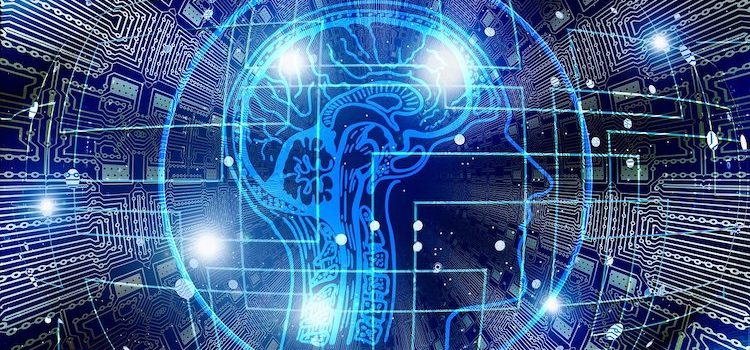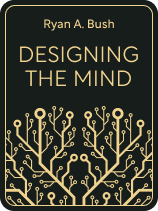

This article is an excerpt from the Shortform book guide to "Designing the Mind" by Designing the Mind and Ryan A Bush. Shortform has the world's best summaries and analyses of books you should be reading.
Like this article? Sign up for a free trial here.
Why is the human brain often compared to a computer? What are the similarities between the human brain’s and a computer’s functioning?
Scientists have been using this analogy—that the brain is like a computer—for decades. Today, the question of whether or not we should view the brain as a complex computer is at the heart of a fierce debate. However, some parallels are hard to deny.
Keep reading to learn how the brain is like a computer and what this means for you.
The Mind as a Computer
Bush argues that the brain is like a computer, with immeasurable inputs and algorithms that prompt the behaviors that make us who we are.
(Shortform note: To best understand Bush’s analogy, it’s important to have a baseline knowledge of computer processing. When we use a computer, we input data that trigger algorithms—formulas that are coded into the computer’s software. Algorithms provide step-by-step instructions, and the computer uses these instructions to execute commands that lead to the desired outputs, or results. For example, a search algorithm retrieves information from stored data based on search queries. Algorithms help us find the best solution for a problem consistently and efficiently.)
In our minds, inputs are external stimuli—for instance, things we see, hear, or experience—that come from events in our daily lives. These inputs then trigger our “mental algorithms,” or thought patterns, which lead to outputs in the form of our feelings and actions.
Sometimes, our default thought patterns don’t serve us. They might be linked to biases and faulty assumptions that prompt undesirable emotions and behaviors, leading us to act counterproductively to our values and goals. Bush asserts, however, that you don’t have to maintain faulty thought patterns forever—since the mind functions like a computer, with the proper knowledge, you can alter your brain’s algorithms like an engineer designing computer software. When you learn to modify your mental algorithms, you can better control the nature of your outputs.
| How Neuro-Associations Control Our Thoughts and Drive Our Behavior In Awaken the Giant Within, Tony Robbins also asserts the importance of “reprogramming” the brain to better control your actions, thoughts, and emotions. Rather than attributing problematic patterns to biases and faulty thinking, however, Robbins argues that they stem from subconscious, harmful neuro-associations. How do these neuro-associations form, and what exactly are they? According to Robbins, your neurons (brain cells) communicate by sending signals to each other via neural pathways, which are physical connections in your brain. Those neural pathways create neuro-associations—mental connections between certain concepts, experiences, and feelings—by linking your emotions about and sensations from a particular experience. As a result, your future thoughts about that activity or subject automatically trigger the same emotion. If an experience brought you pleasure, you’re likely to repeat it to trigger that pleasure again; if it brought you pain, you’ll avoid it in the future. Not only do your neuro-associations influence all of your decisions—by motivating you to avoid pain and seek pleasure—but they’re also strong enough to withstand any logic that contradicts them. This means that your associations can drive you to engage in self-destructive behaviors and poor decision-making against logic and your better judgment. Furthermore, since neuro-associations are subconscious, you often can’t figure out why you keep acting illogically. Ultimately, if you don’t understand the power of pain and pleasure associations to motivate your every action, including your decisions, you can’t take control over your behavior. You’ll end up perpetually reacting to things around you instead of acting of your own will. Luckily, Robbins argues that you can rewrite your harmful neuro-associations, just as Bush argues you can reprogram your mind: Robbins suggests creating new neural pathways and weakening the old ones. To do this, you associate pain with your old, disempowering behavior and pleasure with a new, healthier habit. |
Shortform Example: Change a Faulty Thought Pattern to Change Your Response
Let’s look at an example of a faulty thought pattern that you can change to alter its resultant emotions and behaviors. Say there’s an open position at a company you really want to work for. You apply for the job, but you don’t get it—this is the input. This input then triggers a negative thought pattern: You tell yourself that you weren’t smart enough for the job, and you assume you did poorly in the interview. This thought pattern prompts the undesirable emotional outputs of frustration, anxiety, and embarrassment. Additionally, you respond to the setback unproductively by avoiding future job applications.
Using Bush’s tools (which we’ll discuss further in later sections), you could experience the same thing—not getting hired for a job you want—and change your response by modifying your thought patterns. Instead of assuming that you did something wrong in the application process, you might recognize that you just weren’t the right person for that particular position. Maybe the company already had someone in mind and they were just interviewing outside candidates as a formality.
With these altered thought patterns, you might still feel some disappointment, but you won’t experience the previously intense negative emotions about yourself and your capabilities. Likewise, your experience won’t stop you from applying for other jobs in the future or seeking feedback that could help you improve.
| Is the Brain Really a Computer? Some experts claim that this metaphor (the brain is like a computer) is limiting insights on the cutting edge of neuroscience more than it’s aiding them. They poke holes in the metaphor, pointing out ways in which the brain behaves unlike a computer and arguing that such inaccuracies will lead researchers to misguided assumptions. On the other hand, other experts argue that the brain-as-computer metaphor remains useful. In their eyes, it doesn’t matter if the brain doesn’t act like a computer. Like Bush, they believe that what matters is that the brain accomplishes many of the same functions as computers do: It intakes, processes, and exports information. In their view, the fact that your brain computes makes it a computer. |

———End of Preview———
Like what you just read? Read the rest of the world's best book summary and analysis of Designing the Mind and Ryan A Bush's "Designing the Mind" at Shortform.
Here's what you'll find in our full Designing the Mind summary:
- How the mind can be reprogrammed like a computer
- Strategies to help you change negative thought patterns, emotions, and behaviors
- How to eliminate your biases to perceive reality more accurately






